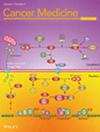Implementation of the Hospitalist System and In-Hospital Mortality Among Patients With Cancer: Using the National Health Insurance Cohort Data
Abstract
Introduction
Hospitalists are directly responsible for inpatients, from hospitalization to discharge. Recently, Korea has started reimbursing hospitalist inpatient services. However, evidence of hospitalists being associated with improved healthcare quality is lacking. We investigated the association between the hospitalist system and reduced in-hospital mortality among patients with cancer.
Methods
This national population-based retrospective cohort study included 398,732 patients with cancer from tertiary and general hospitals with hospitalists whose data were extracted from the Korean National Health Insurance Service Cohort Database in 2021. In-hospital mortality data was obtained, defined as the presence of a record of death between admission and discharge. To increase comparability, we performed a 1:3 propensity score matching based on sex, age, hospital type, hospital region, Charlson Comorbidity Index (CCI), and primary cancer type. We used generalized estimation equation models to estimate the adjusted odds ratios (OR) for in-hospital mortality.
Results
Patients under the hospitalist system had a lower risk of in-hospital mortality (OR: 0.91; 95% CI: 0.87–0.96). Specifically, patients in their 80s (OR = 0.31; 95% confidence interval [CI]: 0.19–0.52) and those with high CCI (OR = 0.93; 95% CI: 0.87–0.99) had a more significant association with lower in-hospital mortality.
Conclusions
Hospitalist services are associated with reduced in-hospital mortality rates in cancer patients, which may be influenced by continuous patient management and expertise. Our results highlight the need for dedicated personnel stationed in hospital wards for improved outcomes of patients with cancer. Our results may encourage the government to consider the expansion of the current policies for efficient allocation of healthcare resources among hospitals in Korea.


 求助内容:
求助内容: 应助结果提醒方式:
应助结果提醒方式:


